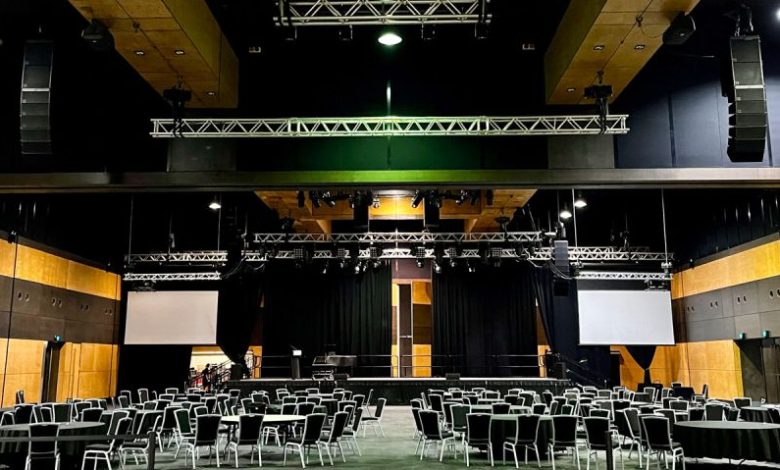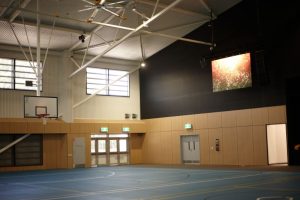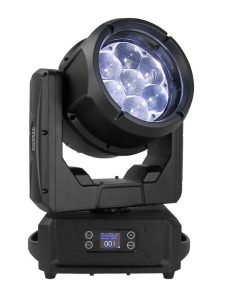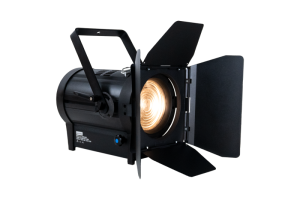Could an AV system improve learning outcomes and student engagement?
Innovations in AV technologies present new opportunities to engage with students. We look at how to enhance teaching and learning with AV.

In modern classrooms, audio and visual technologies (AV) can offer a tailored solution to common issues like audibility, and improve student engagement.
Integrating AV into your classroom and school can improve communication, foster collaboration and boost engagement. When selecting and implementing AV solutions, aligning your AV choices with specific educational requirements and goals will ensure maximum benefit from these technologies.
Improving communication
Some classrooms suffer from poor sound quality. With loud or distracting environments, poor speech intelligibility may hinder students’ ability to listen to instructions or understand material, affecting learning. Students at the back of a class may also be more likely to disengage as distance decreases volume, leading to poor comprehension. Kaiako may find themselves straining their voice by trying to project to the class. This may be counterintuitive as a louder volume decreases speech intelligibility. AV equipment could help to mitigate these factors and improve outcomes for some students.
Read the latest print edition of School News online HERE.
Larger rooms or spaces may benefit from a comprehensive AV system, which creates a “sound field”, where a teacher’s voice can be heard clearly in any area of a given space. These systems include an interconnected network of one or more microphones, amplifiers and speakers installed around the learning area to ensure a teacher’s voice is evenly distributed over the learning area. Such sound field systems can be easily controlled by remote or console and can be installed in multiple adjacent learning spaces to maximise the use of each area and provide flexible learning options.
Other large, flexible and multi-use learning spaces may also benefit from these sound systems. Lunch halls or school auditoriums, for instance, could be a great candidate for a comprehensive AV system.

Installing sound systems could mean a rest area can double as an alternate classroom space or large learning area for multiclass activities. For auditoriums, a clear AV system could bring musicals and plays to life, or even assemblies, creating immersive soundscapes. Some AV systems even have integrated lighting systems which can both bring school productions and events to life and provide practical, technical learning opportunities for students.
Providers are able to advise on systems suitable to a school’s particular needs or learning styles. In classrooms, two or more microphones can be connected to the same system to allow multiple people to use the system within the same session, and many systems come with simple controls that can be connected to components such as laptops or computers for sound playback.
Boosting learning engagement
AV systems can come with additional useful features such as recording equipment. In today’s digital era, and following the COVID-19 pandemic, schools and other organisations have recognised the power of online learning. Today, illnesses still abound, and many classrooms face high absences caused in part by an increased understanding of the importance of staying at home when sick. This means recorded lessons can be crucial for students needing to catch up on work. Even students originally in attendance will benefit from recorded lessons as they are able to access the material as an additional study or revision resource.
Innovations in AV technologies present new opportunities to engage with students. For instance, interactive whiteboards and touchscreens can create more kinetic learning experiences for ākonga and keep them engaged by moving around the classroom and collaborating in real time. Some whiteboards and touchscreens can be connected to existing systems allowing interactive classroom activities to be recorded and uploaded for later reference.
With new innovations in AV technologies, the options to maximise engagement and learning in the contemporary classroom are almost endless.
AV systems in performance spaces
Jonathon Neil from Edwards Sound, Lighting and AV, said AV technology has the power to transform existing spaces like school halls, enhancing learning environments and adding to performances and events.

“The school hall is more than just a gathering space,” notes Mr Neil. “It’s where assemblies, performances and events shape a school’s culture. With the latest in lighting and AV technology, schools can transform these spaces.
“The latest lighting and control systems, often integrated with digital sound and projection, allow students to programme lighting cues and seamlessly synchronise effects with music and dialogue, bringing performances to life like never before.”
Mr Neil said some lighting systems can create unique effects. “Today’s advanced LED fixtures, like motorised wash lights, can create special effects like dappled sunlight, rippling water, or dramatic colour washes that make a school production look professional.

“Students involved in designing, programming, and operating lighting systems gain hands-on experience in an exciting blend of art and technology—valuable skills for the entertainment industry and beyond.
“A high-quality AV system and lighting doesn’t just enhance productions and assemblies, it enriches student learning by providing technical training and supporting creativity in subjects like drama, music and media studies,” Mr Neil said.
“For schools looking to upgrade their performance spaces, the right equipment makes all the difference.”
Considered acoustics for clear sound
Optimising acoustics in classrooms is essential for clear communication and effective learning, said Euan Mackenzie of NAS Solutions.
“Schools should consider a combination of architectural design, strategic material choices, and AV solutions.
“Soft furnishings, acoustic panels, and ceiling treatments can help reduce reverberation, while directional speakers and microphone systems ensure even sound distribution. Proper design minimises distractions, reduces teacher fatigue, and helps students to focus and engage.”
Mr Mackenzie said AV advancements are transforming learning environments. “Sound masking systems help reduce distractions by covering background noise with a consistent, unobtrusive sound, improving concentration and speech clarity.
“Seamless integration of audio systems with school bells and paging ensures smooth communication across the school, allowing for clear, real-time announcements and scheduled alerts without disrupting lessons.
“When these elements work together, they create a more structured and engaging learning atmosphere, helping students and teachers stay focused while maintaining a well-coordinated school environment,” Mr Mackenzie said.
“Ultimately, the goal of AV in education is to break down barriers to learning—whether those barriers are physical, cognitive, or technological—so that every student has an equal opportunity to thrive.









